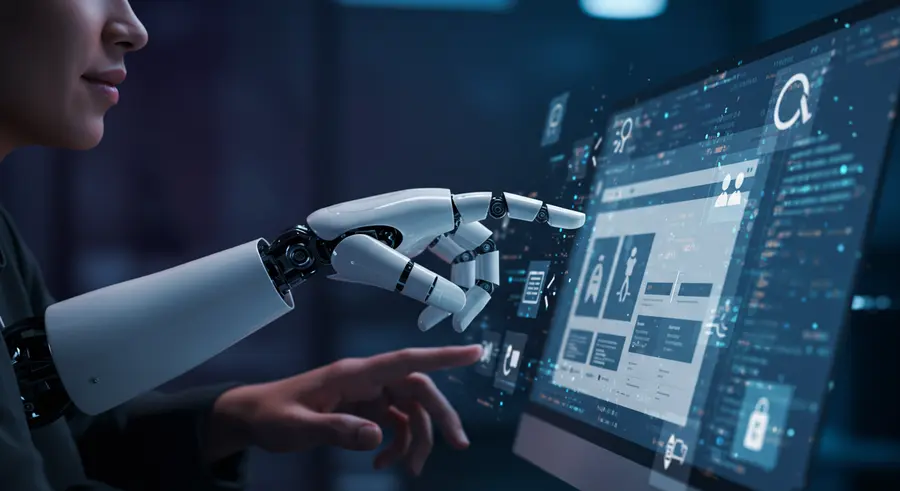Appearance

Welcome, fellow developers and digital enthusiasts! 👋 Today, we're diving into a topic that's not just relevant but absolutely crucial for the future of the web: the powerful synergy between Artificial Intelligence (AI) and Web Accessibility. In an increasingly digital world, ensuring that our online spaces are inclusive for everyone, regardless of their abilities, is paramount. And guess what? AI is becoming a game-changer in this endeavor!
Why Web Accessibility Matters More Than Ever
Before we explore AI's role, let's quickly reiterate why web accessibility is so vital. It's about creating websites and web applications that can be used by people with a wide range of disabilities. This includes visual impairments, hearing impairments, cognitive disabilities, and motor disabilities. Adhering to standards like WCAG (Web Content Accessibility Guidelines) not only broadens your audience but also improves SEO, enhances user experience for all, and demonstrates a commitment to ethical design.
The AI Advantage: Revolutionizing Accessibility
AI is not here to replace human developers in the realm of accessibility, but rather to augment our capabilities, making the process more efficient, proactive, and comprehensive. Here's how AI is transforming web accessibility:
1. Automated Accessibility Auditing and Testing 🤖
Manually auditing a large website for accessibility issues can be a daunting and time-consuming task. AI-powered tools can now automatically scan web pages for common accessibility violations, such as:
- Missing
alttext for images: AI can analyze images and suggest descriptivealttext, improving the experience for visually impaired users. - Insufficient color contrast: AI can identify text and background color combinations that fail to meet WCAG contrast ratios, flagging them for correction.
- Improper heading structures: AI can analyze the semantic structure of your content and recommend improvements for better navigation by screen readers.
- Broken ARIA attributes: AI can detect incorrect usage of ARIA roles, states, and properties that are essential for assistive technologies.
Example Tool: Imagine an AI-powered linter integrated into your CI/CD pipeline that automatically checks for accessibility issues with every code commit, providing immediate feedback to developers.
2. Intelligent Content Adaptation and Personalization 🧠
AI can go beyond static checks and enable dynamic adaptation of content to meet individual user needs.
- Automated summarization: For users with cognitive disabilities or those who prefer concise content, AI can generate summaries of lengthy articles or documents.
- Simplified language generation: AI can rewrite complex sentences into simpler, easier-to-understand language, making content accessible to a broader audience.
- Personalized user interfaces: AI can learn user preferences and dynamically adjust font sizes, color schemes, or layout arrangements to create a more comfortable and accessible browsing experience.
- Real-time captioning and transcription: For live audio or video content, AI-powered speech-to-text engines can provide real-time captions, benefiting users with hearing impairments.
Example Use Case: A news website could use AI to offer a "simplified reading mode" that rephrases articles using basic vocabulary and shorter sentences, automatically triggered based on user preferences or detected cognitive load.
3. Enhancing Navigation and Interaction with AI-Powered Interfaces 🗣️
AI is improving how users interact with websites, especially for those who rely on alternative input methods.
- Voice user interfaces (VUIs): AI-driven voice assistants and chatbots can provide an alternative means of navigation and interaction for users who have difficulty with traditional input methods like keyboards and mice. Users can simply speak commands to browse content, fill out forms, or trigger actions.
- Predictive text and auto-completion: AI can anticipate user input, reducing the amount of typing required and assisting users with motor disabilities or those who use on-screen keyboards.
- Gesture recognition: While still emerging, AI could enable websites to respond to specific gestures, offering a hands-free navigation option for certain users.
Example: A user with limited motor skills could use voice commands to navigate an e-commerce site, select products, and complete a purchase, all powered by an intelligent AI assistant embedded within the website.
Challenges and Ethical Considerations 🤔
While the promise of AI in web accessibility is immense, it's essential to acknowledge the challenges:
- Bias in AI models: If AI models are trained on biased data, they might perpetuate or even amplify existing accessibility issues. Rigorous testing and diverse datasets are crucial.
- Over-reliance on automation: AI tools are powerful, but they are not a silver bullet. Human oversight and expertise remain indispensable for addressing complex accessibility challenges and ensuring true inclusivity.
- Privacy concerns: Collecting and processing user data for personalization requires strict adherence to privacy regulations and transparent data handling practices.
The Road Ahead: A Call to Action 🚀
The convergence of AI and web accessibility is creating a future where the web is more intuitive, adaptable, and inclusive for everyone. As developers, designers, and content creators, we have a vital role to play in shaping this future.
- Embrace AI tools: Integrate AI-powered accessibility checkers and content adaptation tools into your development workflows.
- Prioritize human-centered design: Always remember that AI is a tool to enhance, not replace, human empathy and understanding in design.
- Stay informed: The field of AI and accessibility is rapidly evolving. Continuously learn and adapt to new advancements.
By working together, leveraging the power of AI responsibly, and maintaining a steadfast commitment to inclusivity, we can build a web that truly serves humanity, one accessible experience at a time. Let's build a web where everyone belongs! 🌟